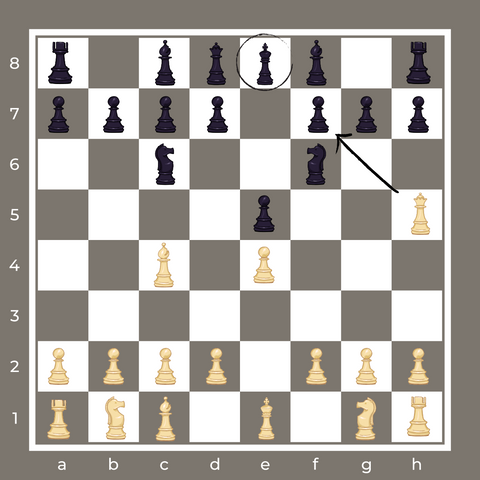

Why do we assume the King will take the pawn then? Because it leads to mate in 4 not 3 and is therefore technically better. In this puzzle, if castling isn't legal, you can still get mate in 3 of black plays the "worse" move and takes the rook instead of the pawn.

Please continue to give us your feedback and suggestions on how we can help make /r/chess better for everyone.Ĭongrats on missing that I don't like puzzles that involve that assumption, especially in end game positions. Use the message the moderators link if your posts or comments don't appear, or for help with any administrative matters. Twitter/Facebook posts must contain a direct link to the tweet/post, and include the author's nameĬhess Spoiler format for problem answers etc., Instructions for /r/chess PGN addon ( Chrome, Firefox)ĭon’t engage in abusive, discriminatory, or bigoted behavior.ĭon't ask for advice about ongoing games.ĭo not use /r/chess exclusively to promote your own content. p. 509.News Puzzles Games Strategy Twitch Other Resources The On-Line Encyclopedia of Integer Sequences.

^ Fischer, Bobby Margulies, Stuart Mosenfelder, Donn (1972).Chess: 5334 Problems, Combinations, and Games. ^ a b Hooper, David Whyld, Kenneth (1992).There are other possible three-move mates for White, such as 1. Further, a similar mate can occur in From's Gambit: 1. Qh5# has been attributed to Masefield and Trinka, although the first player's name has also been reported as Mayfield or Mansfield and the second player's name as Trinks or Trent. Qh5 #.Ī possibly apocryphal variant of the fool's mate has been reported by several sources. This game took three moves!!" One possible sequence leading to the position is 1. The solution in Fischer's book bore the comment "Black foolishly weakened his King's defenses. A board position illustrating White's version of the fool's mate-with White to mate-was given as a problem in Bobby Fischer Teaches Chess, and also as an early example in a compendium of problems by László Polgár. In both cases, the principle is the same: a player advances their f- and g-pawns such that the opponent's queen can mate along the unblocked diagonal. When the roles are reversed, however, White requires an extra third turn or half-move, known in computer chess as a ply. White can achieve a checkmate similar to the fool's mate. A player may also suffer an early checkmate if the f- and g-pawns are advanced prematurely and the kingside is not properly defended, as shown in historical miniature games recorded in chess literature.Ī problem with White to mate instead, given by Fischer and Polgár. The mate is an illustration of the kingside weakness shared by both players along the f- and g- files during the opening phase of the game. Even among rank beginners, this checkmate rarely occurs in practice. Black can be mated in an analogous way, although this requires an additional move, with White's queen delivering checkmate on the third move. The fool's mate received its name because it can occur only if White commits an extraordinary blunder. The fool's mate can be achieved in two moves only by Black, giving checkmate on the second move with the queen. It arises from the following moves, or similar: In chess, the fool's mate is the checkmate delivered after the fewest possible moves from the game's starting position. 1620), via Francis Beale (1656)īarnes Opening, Bird Opening, or Grob's Attack


 0 kommentar(er)
0 kommentar(er)
